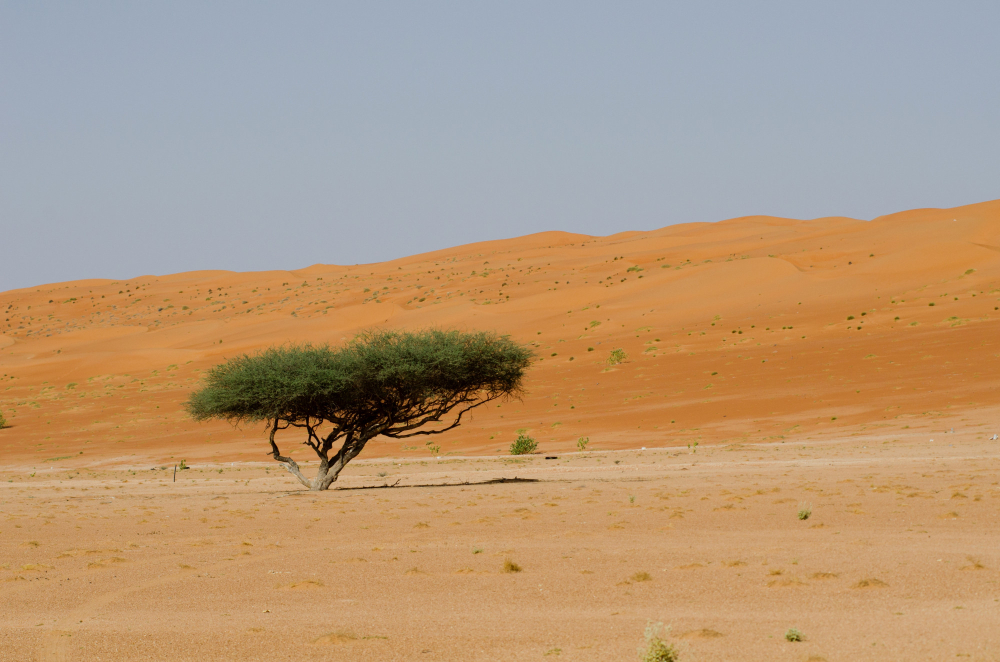A Miracle within the Desert: How a Rare Weather Event Brought Life to the Atacama
The Atacama Desert, stretching along the western coast of South America, is well known as one of the driest locations on Earth. For millennia, its arid landscape has served as a stark reminder of the harsh truth of perpetual drought. However, in a up to date unprecedented event, the parched earth bloomed with life, as shimmering lakes emerged from the barren terrain, leaving scientists and locals alike in awe.
Dr. Maria Rodriguez, a renowned meteorologist that specialize in arid weather dynamics, explains the abnormal collection of events that led to this remarkable transformation. “The Atacama’s aridity is a end result of a complex interaction of geographic elements,” she says. “The Andes Mountains block moisture-laden winds from the east, while the cold Humboldt Current off the coast prevents evaporation, creating a perpetual wilderness.”
But this year, the desolate tract witnessed a rare convergence of atmospheric phenomena that defied its frequent aridity. “It all began with a robust El Niño event,” Dr. Rodriguez explains. “El Niño, a cyclical warming of the vital and eastern Pacific Ocean, disrupts international weather patterns, bringing increased rainfall to typically dry areas.”
However, the Atacama’s geography typically negates even the strongest El Niño outcomes. But this year, a secondary aspect got here into play: a powerful atmospheric river. “Atmospheric rivers are long, narrow corridors of focused moisture that commute hundreds of kilometers throughout the ocean,” Dr. Rodriguez says. “These rivers can delivery an amount of water equal to the float of ten Mississippi Rivers, and when they hit land, they are able to motive intense rainfall.”
The uncommon confluence of those two powerful phenomena – a strong El Niño coupled with the arrival of an atmospheric river – created a great typhoon of kinds. The atmospheric river, fueled via El Niño’s warm ocean waters, introduced an unprecedented surge of moisture to the Atacama. “It was once like a large, invisible hose pouring water onto the desert,” says Dr. Rodriguez.
The torrential downpours, lasting for weeks, transformed the generally parched terrain right into a landscape of shimmering lakes. The Atacama, regarded for its desolate beauty, suddenly pulsed with life. Wildflowers bloomed in colourful colours, drawing pollinators from a ways and wide. The lakes, teeming with microscopic life, attracted flocks of migrating birds, reworking the desert into an unpredicted haven.
The unexpected emergence of those lakes, however, has now not simplest introduced beauty and life but additionally a sense of uncertainty. Dr. Rodriguez cautions, “While the presence of these lakes is an odd sight, they’re probably transitority.”
The Atacama’s climate is inherently fickle, and these lakes are probably to vanish as effortlessly as they gave the impression. The water, absorbed by way of the thirsty earth, will evaporate or seep into the ground, leaving in the back of the acquainted dirt and sand. The desert, in spite of its temporary burst of life, will go back to its former nation of aridity.
However, this infrequent occasion has profound implications beyond its instant visible have an effect on. Dr. Rodriguez highlights the importance of know-how the relationship among climate switch and these severe situations. “The frequency and intensity of such situations might extend with global warming,” she warns. “This may want to have gigantic penalties for the Atacama and different arid regions round the arena.”
The sudden transformation of the Atacama serves as a reminder of the fragility of our planet’s ecosystems. It showcases the energy of nature to surprise us, even in the most unexpected of areas. This rare occasion, a short respite from the desert’s regularly occurring aridity, emphasizes the need for accountable stewardship of our organic substances. It underscores the essential significance of addressing climate switch and its consequences, lest we witness the everlasting lack of life and grace in areas like the Atacama.
Beyond its ecological significance, the event has also brought a renewed sense of wonder and optimism to the area people. The humans of the Atacama, acquainted with life in a harsh ecosystem, have skilled a temporary revival in their land. The lakes, a testament to the resilience of nature, have sparked a sense of hope and renewed connection to their atmosphere.
The sudden emergence of lakes in the Atacama Desert, while temporary, serves as a stark reminder of the interconnectedness of our planet’s systems. It highlights the attainable for both beauty and devastation in the face of climate change, emphasizing the pressing should address this global undertaking. As the desert slowly returns to its former arid state, the reminiscence of this unique occasion will function a reminder of the abnormal energy and fragility of our natural world.
The Science Behind the Phenomenon:
- El Niño: El Niño is a cyclical warming of the central and eastern Pacific Ocean, happening every 2-7 years. It impacts global weather patterns, bringing greater rainfall to regions which might be normally dry.
- Atmospheric Rivers: These are long, narrow corridors of targeted moisture that go back and forth thousands of kilometers around the ocean. They can transport an great quantity of water, causing intense rainfall while they hit land.
- Convergence of Phenomena: The Atacama’s up to date transformation used to be brought on by a aggregate of a robust El Niño event and the arriving of a powerful atmospheric river.
- Implications for Climate Change: The frequency and depth of such severe occasions may amplify with global warming, probably causing extreme impacts on arid regions international.
The Atacama: A Unique Ecosystem:
- The World’s Driest Desert: The Atacama is recognized as one in all the driest places on Earth, with some regions receiving less than zero.004 inches of rainfall annually.
- A Harsh Environment: The desert’s severe aridity creates a harsh surroundings that is hard for life to thrive in.
- Life Adapted to Aridity: Despite its extreme prerequisites, the Atacama is home to a diverse range of organisms tailored to live to tell the tale with minimum water.
The Future of the Atacama:
- Temporary Lakes: The lakes that formed in the Atacama are likely to vanish as easily as they appeared, due to the desert’s certainly dry stipulations.
- Climate Change Impacts: The Atacama, like other arid regions, faces big threats from climate change, along with higher drought, desertification, and manageable shifts in biodiversity.
- Conservation and Adaptation: Addressing climate change and implementing sustainable practices are vital for retaining the unique ecosystems and groups of the Atacama.
The Event’s Impact on Humans:
- Hope and Optimism: The sudden emergence of lakes brought a feeling of ask yourself and optimism to the local network, highlighting the resilience of nature.
- Economic and Social Opportunities: The lakes would possibly create temporary financial and social possibilities related to tourism, agriculture, and water components.
- Climate Change Awareness: The event underscores the importance of climate change focus and the want for adaptation techniques to mitigate its affects.
The Atacama Desert, with its amazing transformation, serves as a powerful reminder of the unpredictable nature of our planet’s climate and the urgent need to address the demanding situations posed by climate change. While the lakes may be temporary, the instructions learned from this infrequent event may have lasting affect, inspiring us to work towards a more sustainable future for our planet.

